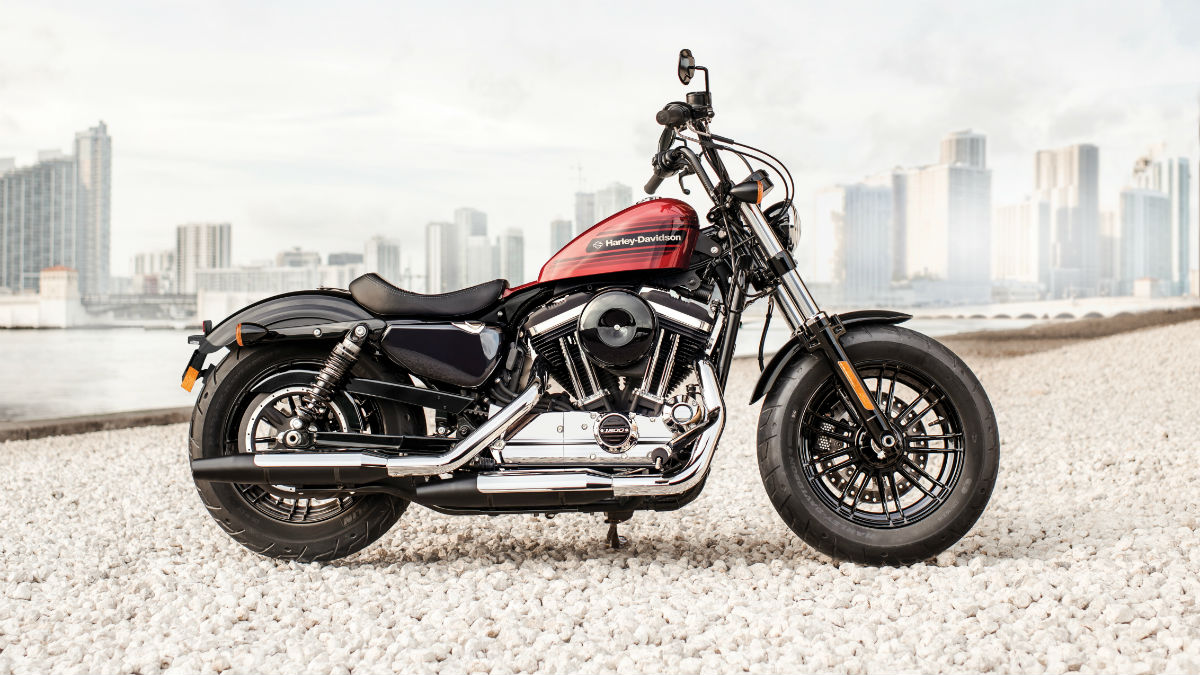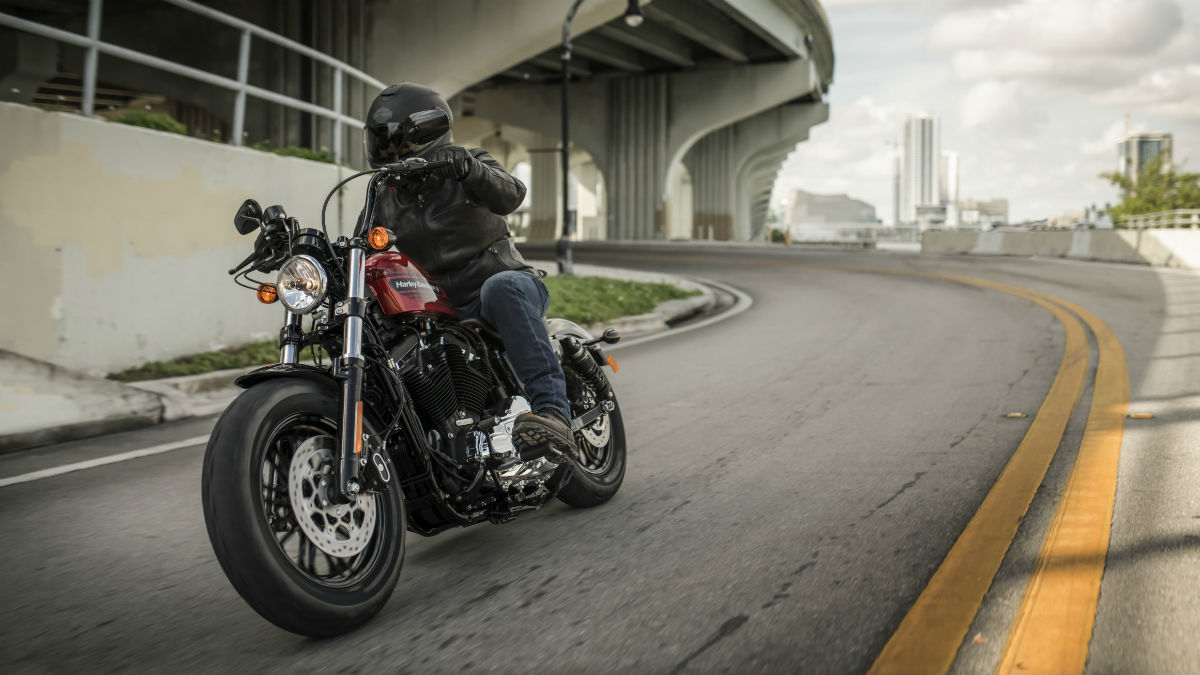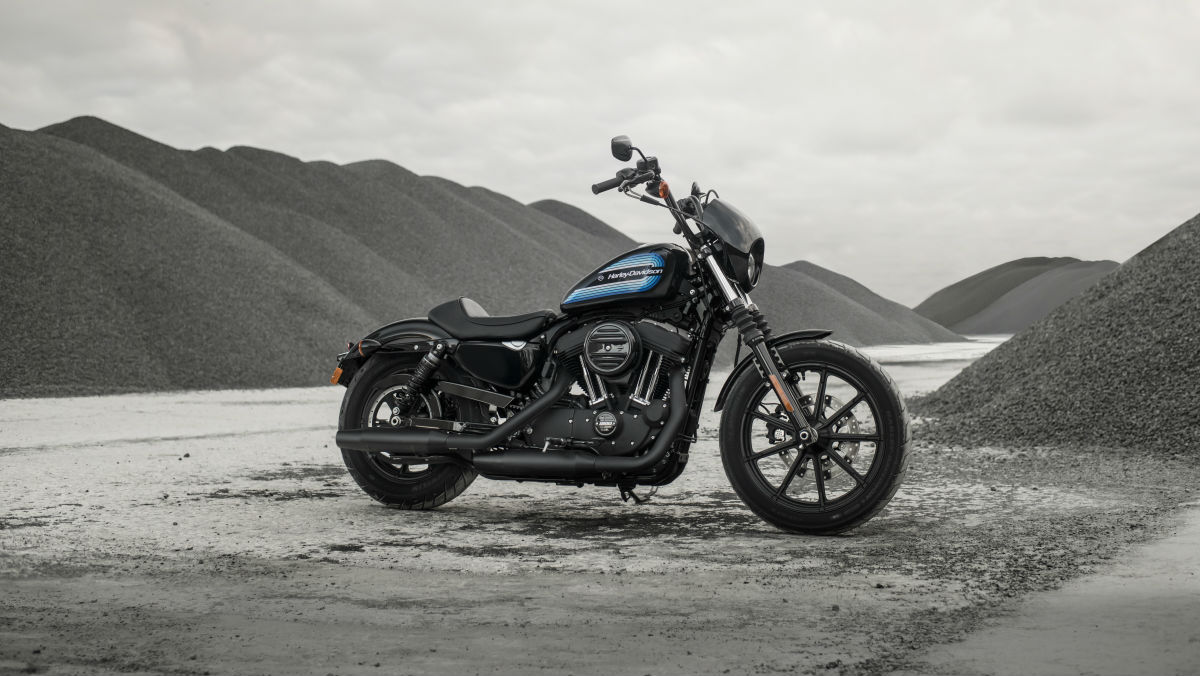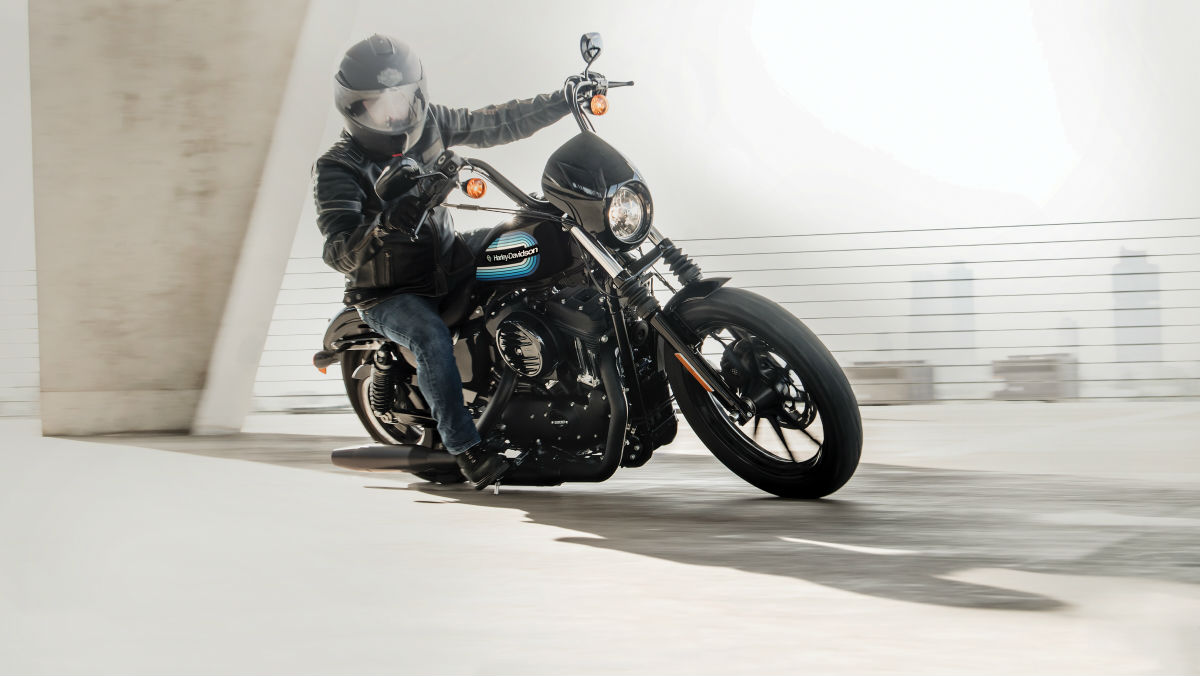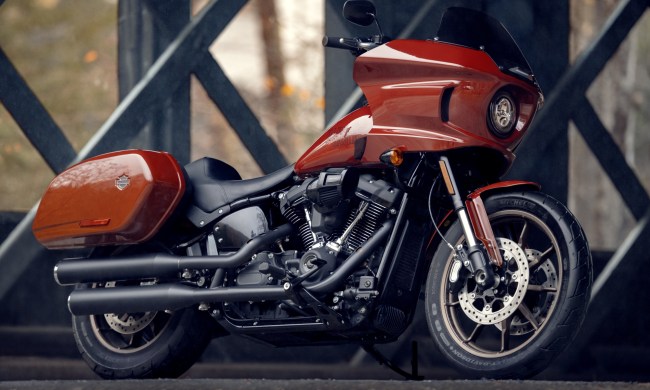Harley-Davidson is an American staple — a company that is steeped in the country’s history and a brand looking to invigorate a generation that may or may not be as interested in motorcycles as previous crops. To that end, Harley-Davidson has released two factory custom models within the company’s lowest-price family of motorcycles: the Sportster Forty Eight Special and the Sportster Iron 1200.
The two motorcycles aim to capture a different market segment that Harley-Davidson has long neglected: cheap, fun, and badass-looking motorcycles. Both models include a new graphics package that was originally popular with the brand in the 1970s and a handful of parts-catalog specials, which differentiates them from the rest of the current Sportster lineup.
The Forty Eight Special features a new front end with wider forks to encompass a fatter front tire. The forks rise up to meet forged aluminum triple clamps, finished with a set of glossy black Tallboy handlebars. The rims have been murdered-out and wrapped in Michelin Scorcher 31 tires. The Forty Eight Special is then topped with a 2.2-gallon peanut tank, which in practice, is far too small for the company’s Evolution 1200 engine.
Moving to the Iron 1200, Harley-Davidson apparently wanted something more sinister, as the bike’s color of choice is gloss and matte black. Wheels, handlebars, seat, tank, motor, primary cover, and exhaust — everything has been blacked-out. The Iron 1200 also includes a set of Mini Ape handlebars, a new headlight cowl and mini windscreen, a Cafe-style solo seat, nine-spoke rims, and a 3.3-gallon Sportster tank.
With the Forty Eight Special and Iron 1200, we can assume Harley-Davidson is searching for a saving grace. The company is in distress with year-over-year losses in both cash reserves and new purchases. First-time buyers are looking to Indian, Triumph, Honda, and even Kawasaki for products they’d previously get from Harley-Davidson.
Here’s the rub: These might not be good enough to do what Harley-Davidson needs them to do (i.e. save the company). They’re good-looking motorcycles, but both are based on very old design in both function and form, and neither bike’s pricing is what you’d call enticing; the Forty Eight Special starts at $11,299 and the Iron 1200 at $9,999.
However, Harley-Davidson is a brand that survives. It is the Bear Grylls of motorcycles. Harley-Davidson will scratch and scrape and claw its way out of certain doom. If we were betting individuals, we wouldn’t count Harley-Davidson out just yet.

